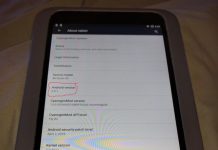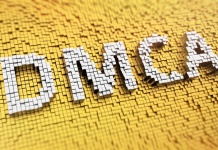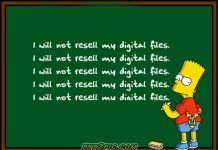 There’s an excellent review of the Nook by Lisa Gade that gives you almost more than you want to know. She went from hating it to giving it 4 stars – now that its had a couple of firmware upgrades. But the DRM situation is getting crazier every day.
There’s an excellent review of the Nook by Lisa Gade that gives you almost more than you want to know. She went from hating it to giving it 4 stars – now that its had a couple of firmware upgrades. But the DRM situation is getting crazier every day.
She includes a chart of the DRM compatibilities between the Nook, Sony Reader and Kindle, and, of course, nobody is compatible with anybody else. The Sony and Nook can read Epub, of course, but it’s the DRMed Epub books that cause the trouble. The Nook can’t read Sony DRM and Sony can’t read Nook DRM and, of course, the Kindle can’t read either and “either” can’t read Kindle DRM and now Apple is saying it will have its own DRM that Kindle and Sony and Nook can’t read. I’m sure it’s all very clear to you now, especially since they are, almost, all using the new “industry standard” Epub.
Of course everybody, except Amazon, is practically lying through their teeth by telling consumers that they are using the so-called “standard” Epub format and how this is a great benefit to everybody. Hogwash! No matter how much you dislike Amazon’s DRM at least you know where you stand with it.
I’m beginning to think that we’d be better off without Epub. At least it was clearer in the “old days”. Just look at a format and see if it was DRMed or not. Even if it was you could still read it on many platforms. Remember eReader? You put in your credit card number and could read it anywhere. Remember Mobipocket? You could authorize any number of devices to read your DRMed books. Now that Epub has come along, if you have a DRMed book you are limited to one and only one device. The whole thing is a fraud.
Epub is nice and useful for non-DRMed stuff, but as publishers lock down more and more works with DRM I’m beginning to think that we were better off before Epub ever existed. At least we could understand what was going on. And where is the IDPF in all of this? Nowhere! Sitting back on its haunches and letting the standard it created be ripped apart and trumpeted to consumers as a savior, when it is becoming nothing more than a mess in the making.
Shame on you, IDPF!

































Paul,
The Nook can read the older Adobe DRM (like Sony can). I have one right now, and Adobe DE recognized it and authorized it.
This is exactly why I remove the DRM from all the ebooks I buy, and why I won’t buy any ebooks that I cannot remove the DRM from.
What do you mean “remember eReader”? Fictionwise and many B&N titles still use it.
You are so right Paul. The whole “open format” thing is a just a cruel joke on the consumer. I could not believe that Jobs stood up in front of all those people and said iBooks would use the “most open” format out there. So deceptive.
The info above is wrong. As is correctly stated in the linked article the Nook can read both B&N’s new version of ePub DRM (which is still done through Adobe but is eReader ‘style’) and the older/regular version of Adept DRM that Sony offers (as well as every other retailer selling DRM’s ePub but B&N).
Also Adobe plans to make an updated SDK available (and an updated version of ADE) to other device manufacturers so that if they choose manufacturers (Sony, Netronics, Hanlin, etc.) will be able to offer updated firmware that also works with B&N’s version of the DRM.
I hate DRM, but her information is wrong at least partly.
It was stupid of the IDPF to create a “standard” that allows for whatever DRM someone chooses to apply to it instead of specifying a DRM scheme when they knew it would be needed at this point and time. Now we need to worry if Apple’s ePub’s for iBook will use yet another DRM scheme, probably, and if they will make an SDK available for manufacturers of other devices, doubtful.
It would be nice if Amazon would go ePub, but I think if they do they’ll hold out until there’s no other choice.
I think Paul’s anger is misplaced. From the IDPF website, “…’EPUB’ allows publishers to produce and send a single digital publication file through distribution and offers consumers interoperability between software/hardware for UNENCRYPTED reflowable digital books and other publications.”
It is not the fault of an international standards body that publishers are misleading the general public about how accessible their files are to differing electronic readers. DRM is all about controlling how the file is read, not how the file is made. PDF format suffers from this malaise as well – shall we ditch reading those files too?
I think we serve fellow readers best by reminding them of an old Roman saying – caveat emptor. Let the buyer beware. I seek out non-DRM books to read and reward those sources with my purchasing dollars.
The DRM was never part of any “standard” it’s a wrapper.
Adobe’s ADE DRM is as proprietary as everything else out there they simple make sure when they update the ADE reader they include compatibility to the older DRM versions. So eBook readers that use ADE to install their eBooks will always be the same across the board.
If Apple goes with their old Fairplay DRM then no it will be just another DRM wrapping an ePub file format.
Once you strip the any of the proprietary DRMs you still have the ePub file and that is actually the “standard”.
Also, as I remember, ePub DRM was cracked fairly quickly compared to others. Maybe Adobe’s original DRM took a little time but the B&N DRM (which I guess is just a modified version of Adobe’s original…?) folded pretty quickly.
Ya know, for a while I was getting really tired of this blog because it seemed like every post was pushing ePub pretty hard. You really gave the impression that once every ebook reader could handle ePub, it would be a better world.
Well, once money, vendor-lock-in, and DRM got a hold of ePub, it became just as crappy as every other format out there, and possibly even worse, since now all the “ePub compatible” devices can’t read ePub from other devices. All it has really done is added another story to the already precariously high tower of e-babel.
At least now, (I hope), we won’t be having the wonders of ePub rammed down our throats, now that it has been ruined at the implmentation phase…
Is there a simple way to remove DRM from Mobipocket format? Having bought a DRM-protected book in Mobi, downloaded to my laptop, I feel cheated that my handheld Ecoreader cannot display it.
cathy.macleod@optusnet.com.au
Google “mobidedrm.” As long as you have python installed and are familiar with how to use the command prompt, it should be a piece of cake from there. 🙂
I read the article above with interest, and deepening confusion – which is curious as I run a blog all about eReaders and so on. To be honest, I have never really understood how the whole DRM thing works. I know how ePUB works, as I use that format most of the time when I download books that come in some other format (good old Calibre!)in order to put them on my Sony eReader.
So there obviously isnt a problem with ePub – as crauscher pointed out, but with the weird games the various eReader and Publishing houses are playing.
Protecting their intellectual property I understand, but surely one universal form of protection would be the sensible answer. And anyhow, no one stops me giving my old paper books to friends. We need the ePublishing world (to coin a word) to find a way that works in all our interests, and then we should be OK.
@bjgger: I’m going to play devil’s advocate here. As people have pointed out, the Nook and Sony Reader (and I’m sure there are other readers) can both read Adobe’s original ePub DRM. As long as you shop at the right place, you can use that DRM scheme on multiple readers, which I think is better than what you get with most readers. If you shop at the Sony E-Book Store, you should be able to read those on the Nook. Personally, I own a Kindle and would never buy an ebook I couldn’t strip the DRM off of, but I don’t think the adoption of ePub is hurting anything. And since ePub is really easy to strip, I can in effect get tons of DRM-free ePub books, which are easier to edit and manipulate than other formats.
Hi, as a Sony user I was very confused to begin with, as I was under the impression I could only purchase books from the shop I bought the ereader from (Water Stones in England). But I quickly discovered that this wasnt true, and once I also discovered Calibre ( a program to convert files to ePub among other formats) I was away, and have not really had any problems owing to the DRM problem. However, I agree with the general tenor of the comments here, especially crauscher, who points out that the problem isnt ePub, but the non-standard way in which the makers of ereaders are applying it. Obviously we need the publishers and ereader makers to get together and agree on one standard. Protecting intellectual property is perfectly reasonable, but it has to be done in a manner that works for us, the consumers – which it patently isnt doing just now.
The two, soon three, mutually-incompatible .epub formats demonstrate that Amazon made the smart move when they stuck with .mobi format rather than .epub and why opening up the Kindle to .epub directly (they already support it indirectly with kindlegen) would be bone-headed. For the general audience “While your B&N device will, of course, read books bought from the Sony store, your Sony device won’t read books from the B&N store, even though they both say ‘epub’ on them, and naturally neither of those will read .epub books from the Apple store; but never fear all these stores and devices can be made interoperable with the right Python scripts, as long as you’re willing to commit criminal acts” translates as “Fuggedaboudid, I’ll just buy a Kindle.”
I do agree that this DRM fragmentation thing is a real and very serious problem for readers and ebooks. ePub is to blame partly, because the specifications don’t say what kind of DRM is required. That vagueness has led us to this path we’re currently on. If ePub mandated a DRM scheme, it might be that many device makers and publishers would simply avoid it, and create their own format instead. It’s hard to speculate on that, I think.
But yea, at least adobe’s drm is easy to remove.
What’s the point of DRM, if almost anyone could, if want so, break it?
I have a friend that bought Paul Auster’s Invisible. The e-book was on sale for about US$ 22,00 on many ebookstores, but on Kindle Store it was for US$ 11,00. What did he do after that? Broke Amazon’s DRM, so he could read on his Sony Reader.
He bought it cheaper, and could read everywhere. Wasn’t it to be always like this?
All DRM is stupid and anti-reader.
You should host or point to a definitive page noting which readers support which formats, and that every dang one of them involves DRM, reducing your freedom to read the book on any device you own (e.g. where’s my maemo support? where’s my kindle app for Android?). And, if you really have stones, linking to info on defeating each DRM version (if it’s possible).
Note the failure of DRM in software and music.
Support social-DRM as an alternative.
Nook most definitely cannot read Sony eBooks, not even the free one. Just tried and demanded my money back from the Sony people because their customer representative couldn’t understand what DRM is.
If someone could help with removing the DRM, that would be great, although I’m loathe to download :/
A somewhat refreshing post in a huge wave of usual TeleRead “ePub is king; hear that, Jeff?” stuff.
Besides being a bad *format* (when encumbered by DRM), ePub is also a terrible *standard*, since its base lies in XHTML/CSS (which are somewhat better as formats, but are an epic fail as standards). Not all readers display it in the same way. Sony, for one, couldn’t do tables last time I was bothered to check. So we will either succumb to the least common denominator (txt or ‘textify’ would be better at that), or go the “ePub for Sony/ePub for nook” way.
I may even write a bigger post on that one day if I’m not lazy.
Well, I think you need to separate (a) the standard, from (b) whether the standard is implemented well by the reader, from (c) whether the standard is implemented well in a particular ebook, from (d) whether there *is* a good solution that works across devices with different screen sizes.
Tables are a challenge, and ePub is not a SilverBullet. A large/complex table is not going to be very usable on a small screen, regardless of technique. (Though maybe some sort of inset scrolling-table-with-locked-headers JavaScript technique could work, if ePub was willing to support JavaScript.)
Hai, please leave a comment on my blog and I will walk you through the steps of removing Sony DRM.
Bill,
If you’re talking about the standard as in “the document I can print out and use for weight-lifting exercises”, then this standard is only worth its weight in paper.
“Standards making 101”: the standard is worth nothing; execution worth everything. To make a good standard, you license out the right to claim standard compatibility (for free or for a fee) and you test everyone claiming to be compatible (or release a tool to do that). If the standard is not implemented well, then you sue the hell out of whoever damages your standard by falsely claiming support. If there is no good solution across devices, you exclude the feature from the standard. Leaving it to the implementors is not going to make a standard.
More on that: http://www.joelonsoftware.com/items/2008/03/17.html
And don’t get me started on JavaScript. JS is another non-standard in a row of w3c epic fails. It’s better left out of ePub, already failing on its standard role.
I can’t stand what Sony is doing with ePub (no right-justification), and after a quick hands-on test with the Kindle, I find the device far too sluggish to use – it’s even slower than my PRS-505 !
My standard of choice for a reading device is a Viliv S5 running Windows XP. I have my Mobi, Kindle for PC, Adobe DE and ereader.com ebooks all stored there and can access them without too much hassle.
I can’t find it in me to blame the folks who strip DRM from their legitimately-purchased ebooks, though, because, when all is said and done, DRM is a humongous scam, just another tool to fleece the consumer.
I am another, (along with Tony Cole) that doesn’t understand DRM. It seems the unanimous opinion that DRM is basically wrong, stupid, etc. I have chosen the nook as my ebook reader, but am seriously considering switching my allegiance to the Apple iPad and yes, I know it is not an ebook reader. I suspect, though, I would run into the same limitations mentioned by others.
The consumber can’t win, just spend money.
All of this reminds of the stupid games companies have always played. Only one power cord to fit every device, based on the plug and port. If you lost your cord you had to back to the manufacturer to get one. Radio Shack had the cabling fix for that.
Then it was cables for cell phones. I can’t even count the number of different power cords and car chargers I have thrown away because every upgrade forced me to buy their cables. All the normal basic stuff any device would need. Finally there is an industry standard…not the iphone of course it’s still special, special enough to buy the extra junk for 😉
This whole book DRM makes me just as mad, actually madder. I’ve spent 6 years with ereader. I have hundreds of books, which I love. None of them will work with ibooks on my iPad. The money I spent went to the company and they profited, money went to the publisher and they profited. I can still pick up a book from 15 years ago and read it in a new house in new state, in a different world. We should be able to read books we have legitimately purchased on any upgraded technology which comes along. DRM stinks!